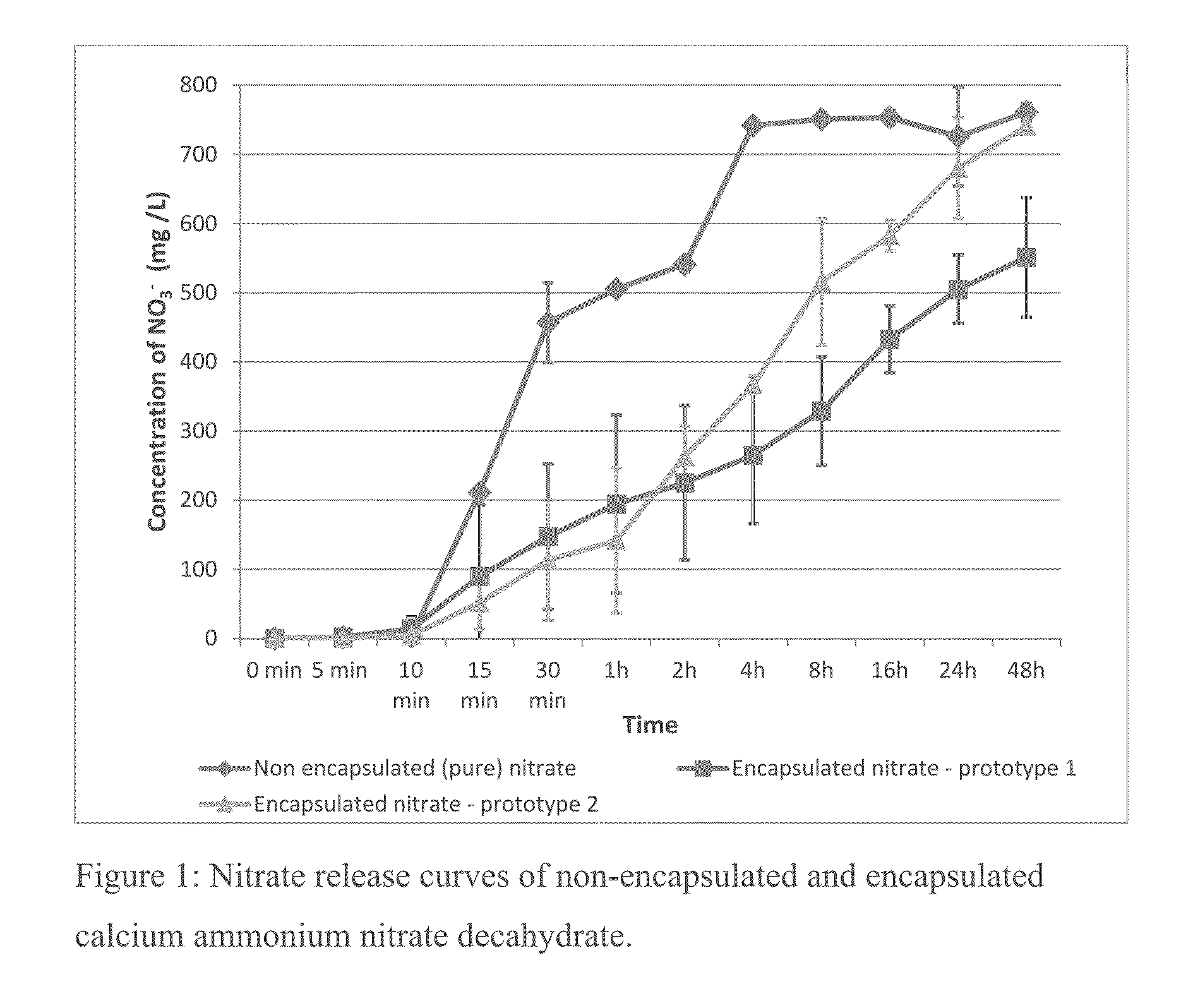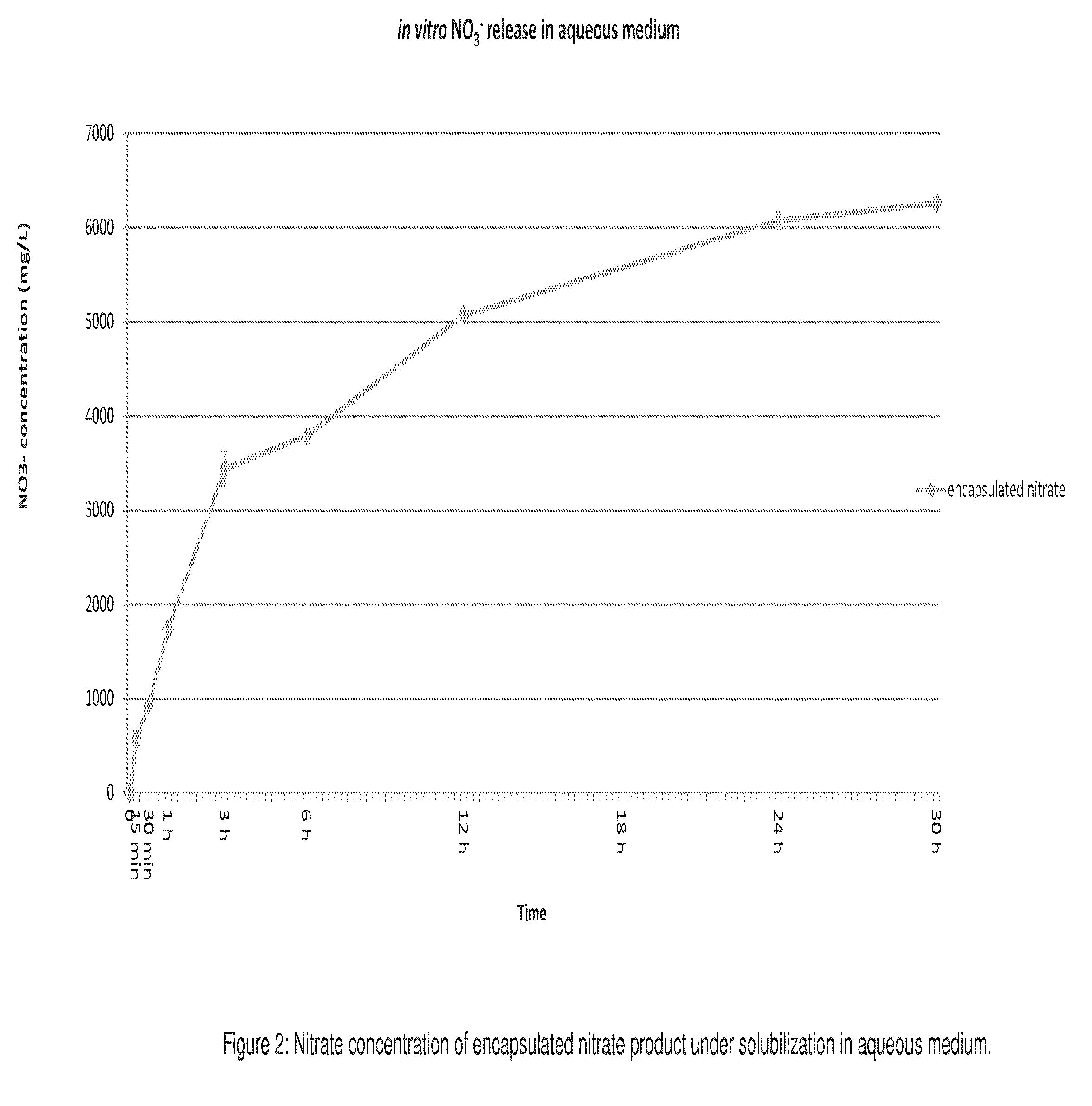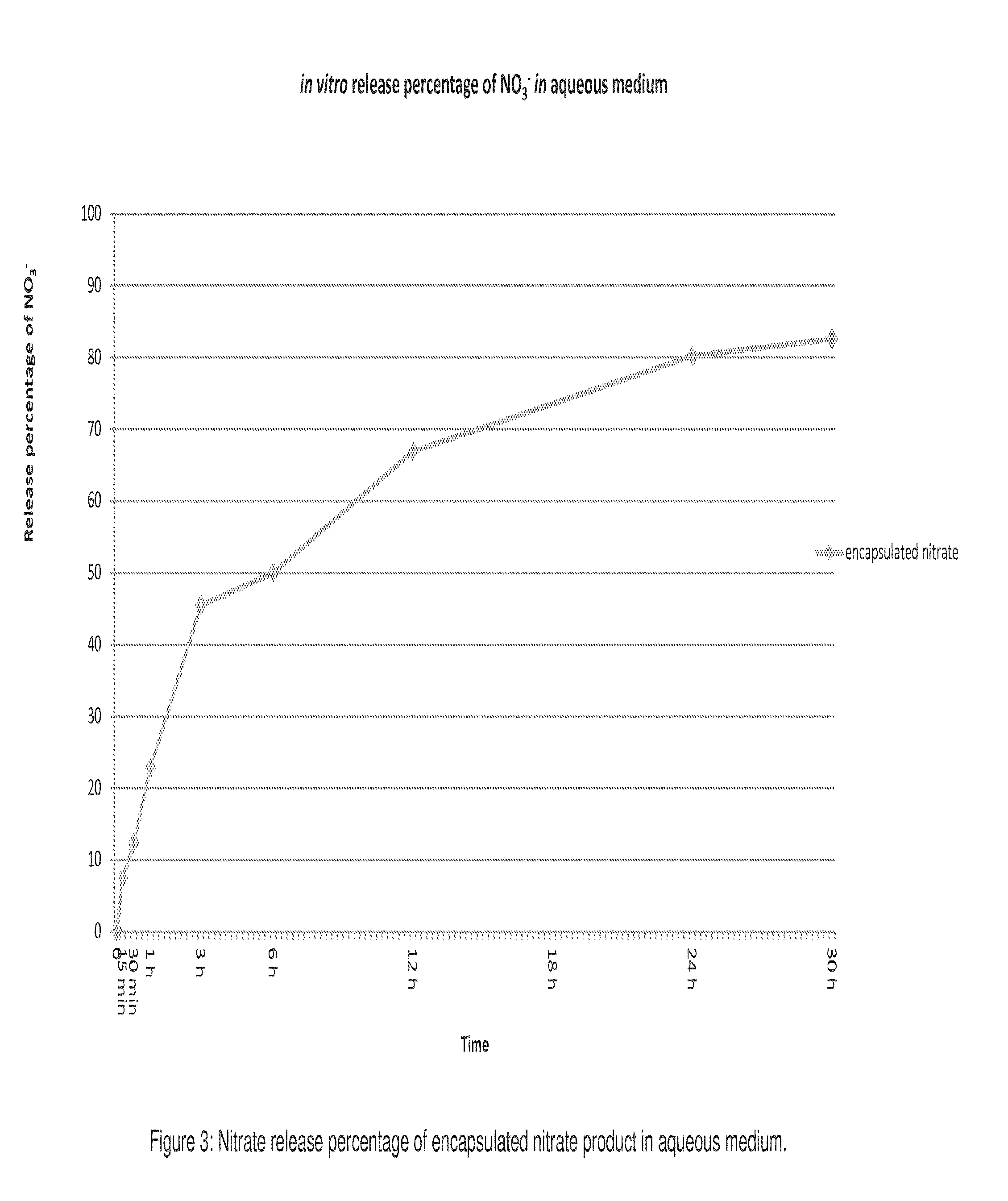Methods of reducing methane emission derived from ruminal fermentation while simultaneously reducing risk of nitrate intoxication
a technology of ruminal fermentation and methane, which is applied in the field of livestock production, can solve the problems of nitrate and sulfate protection, coating, and encapsulation, and does not consider the effect of weight gain and/or milk production
- Summary
- Abstract
- Description
- Claims
- Application Information
AI Technical Summary
Benefits of technology
Problems solved by technology
Method used
Image
Examples
Embodiment Construction
[0042]Taking into account the gaps presented in the art, it is proposed, as an innovation, compositions based on nitrates, used as feed additives to reduce the methanogenesis in ruminants combined or not with sulfates, since sulfur-based compounds improve the reduction of nitrate intoxication risks, being this composition coated with vegetable fats that reduce the absorption rate of nitrates by the animal, minimizing the accidental intoxication risks derived from feed management—a problem until this moment without technical solution, demonstrating in such a way its inventive activity. The encapsulation of the aforementioned composition also solves the problems related to nitrate adaptation, higroscopicity, which hampers the transportation and stowage excessively, and related to animal palatability, due to the excessive bitterness of the composition without the mentioned coating.
[0043]Such granules, or their variations, are manufactured with nitrates and sulfates, which are responsib...
PUM
| Property | Measurement | Unit |
|---|---|---|
| density | aaaaa | aaaaa |
| diameter | aaaaa | aaaaa |
| weight | aaaaa | aaaaa |
Abstract
Description
Claims
Application Information
 Login to View More
Login to View More - R&D
- Intellectual Property
- Life Sciences
- Materials
- Tech Scout
- Unparalleled Data Quality
- Higher Quality Content
- 60% Fewer Hallucinations
Browse by: Latest US Patents, China's latest patents, Technical Efficacy Thesaurus, Application Domain, Technology Topic, Popular Technical Reports.
© 2025 PatSnap. All rights reserved.Legal|Privacy policy|Modern Slavery Act Transparency Statement|Sitemap|About US| Contact US: help@patsnap.com



